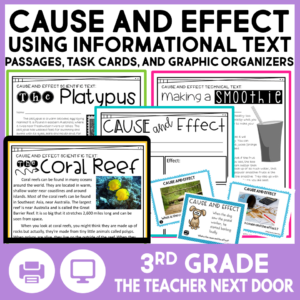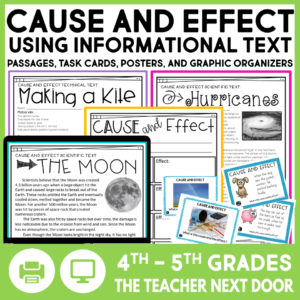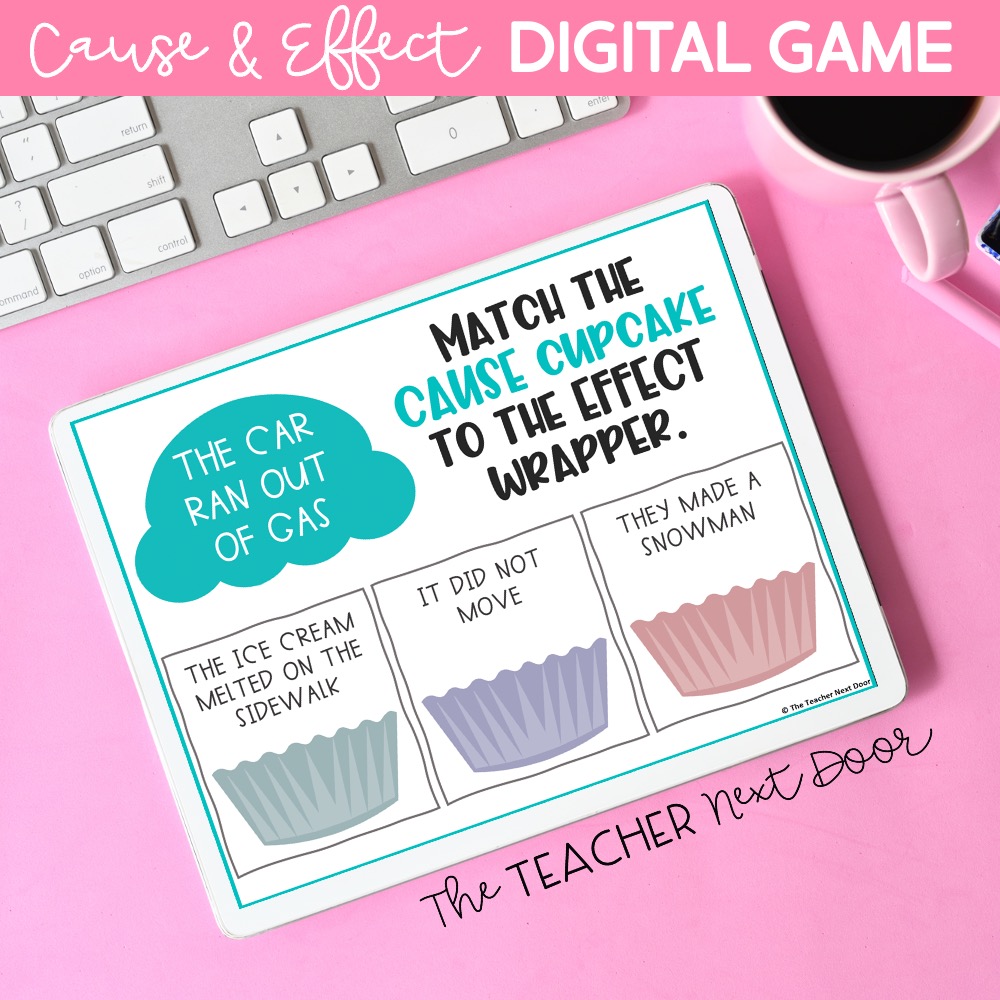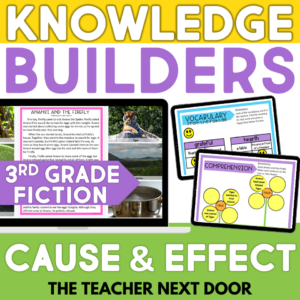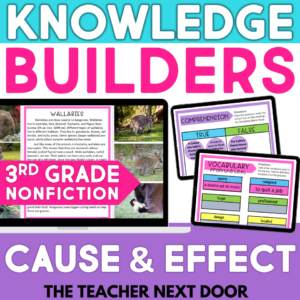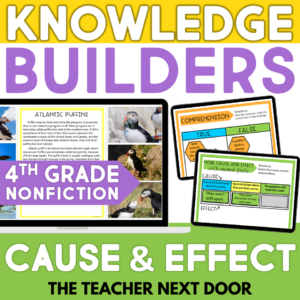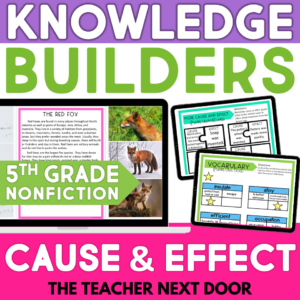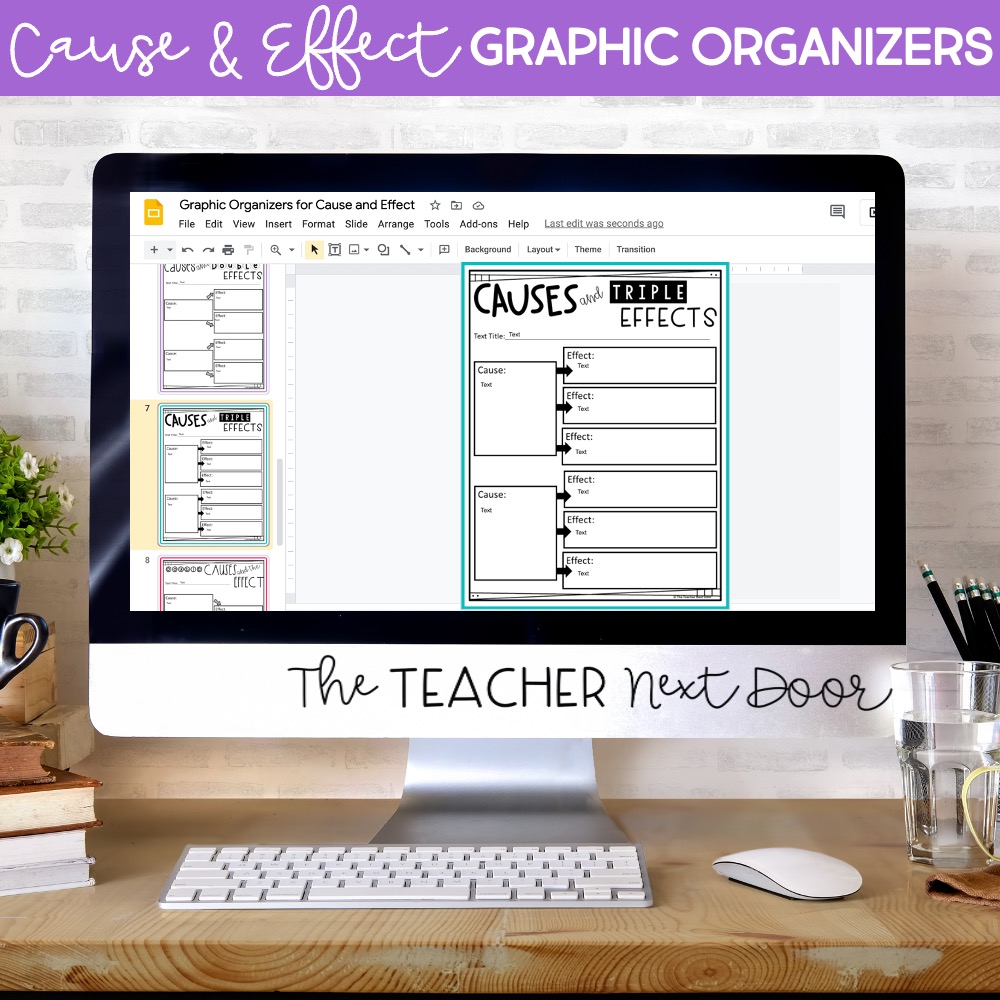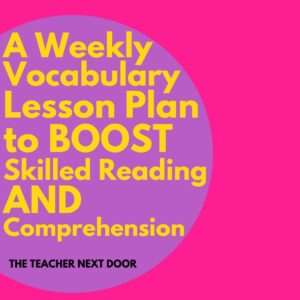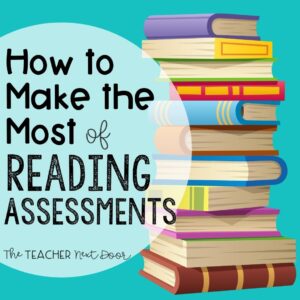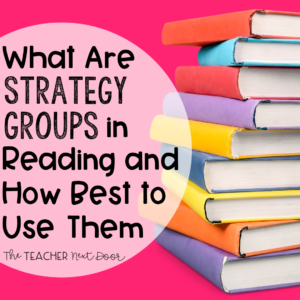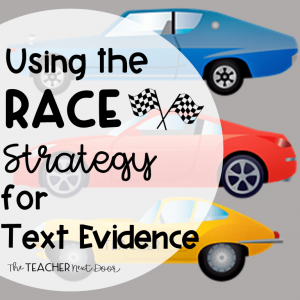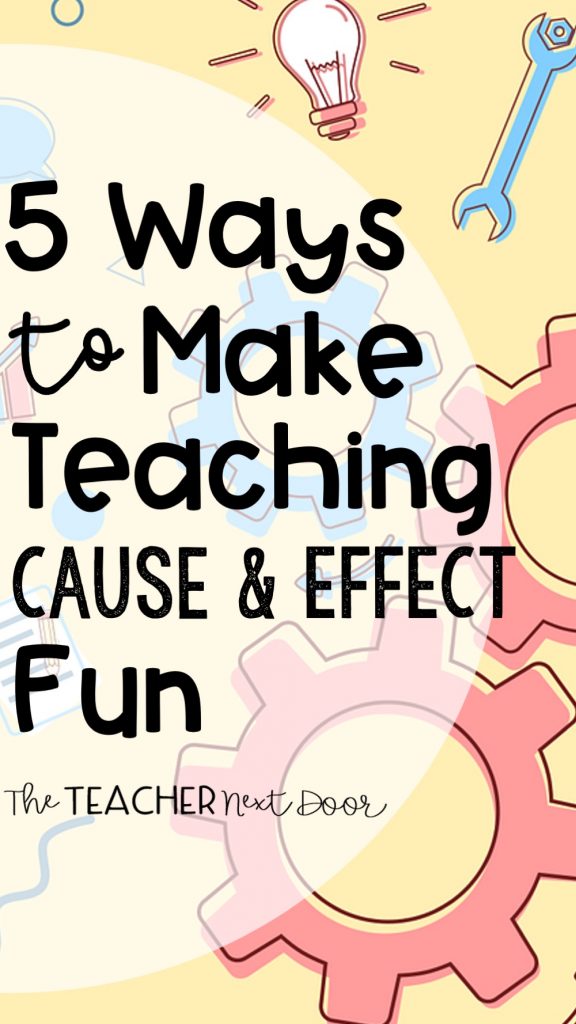
You see a pair of broken glasses. What happened? Why did it happen?
You see an ice cream cone on the ground. What happened? Why did it happen?
Enter cause and effect.
Cause and effect is a big topic in the upper elementary classroom, and it is one that almost every year my students struggle with at the beginning of the year.
Most of the time, they get the cause and the effect mixed up, so I’ve come up with some fun cause and effect lessons to combat the confusion that are educational, digital, and hands-on friendly. One of my favorite parts… they involve little to no teacher prep.
Here are some of my favorite cause-and-effect lessons.
Relate Cause and Effect to Real Life.
One way that I enjoy teaching cause and effect is by making it relatable to my students. I do this by using task cards (like the ones shown in this resource) that show real-life situations.
Students can see a picture of something that happened, and then we can start a discussion about what happened and why it happened. I tell my students that the cause is “why it happened” (what happened first), and the effect is “what happened” (or what happened next).
Students can complete this cause and effect lesson in small groups, individually with games like SCOOT, or digitally.
Once students get a good idea of what cause and effect is, they can use the graphic organizers to relate cause and effect to any book they are reading, or the class is reading as a whole. Put the resource in a page protector or laminate it for use all year long.
Make it a Game
When you want your students to remember something, you have to make it memorable! One of my favorite things to do in the classroom is to gamify whatever we’re learning. Games are an excellent way to review or teach a new skill because students respond to that fun type of interaction.
This cause and effect lesson involves using a cupcake game to match cause and effect statements. Students can play online or offline on the computer (no prep and self-correcting), or this game can be printed for a great hands-on activity.
Use interactivity
I have always found that students learn more when they are actively engaged in their learning. Teaching cause and effect is an easy way to get students involved and learning interactively.
Google Slides is a popular resource for students and teachers, both virtually and in person, because they allow students to work interactively with drag and drop moveable pieces. They also allow the teacher to see that work and comment on it in real-time.
If you teach third, fourth, or fifth grade, you might find these resources interesting. They include nonfiction and fiction passages with vocabulary, comprehension, and focused skill slides!
Check them out here:
Use an Anchor Chart
Anchor charts work well in upper elementary, although lower elementary teachers may use them more often. However, there are so many pros to using anchor charts in the upper elementary classroom that I love using them!
Earlier, I mentioned my students tend to struggle with cause-and-effect lessons. However, if I provide them with an anchor chart hanging on the wall and in their interactive notebook, they are more likely to remember the topic and what I’m talking about.
Anchor charts are quick guides that students can look at to remember something, and they are extremely helpful for students to refer to throughout the school year. You can add words and/or pictures to best suit your class.
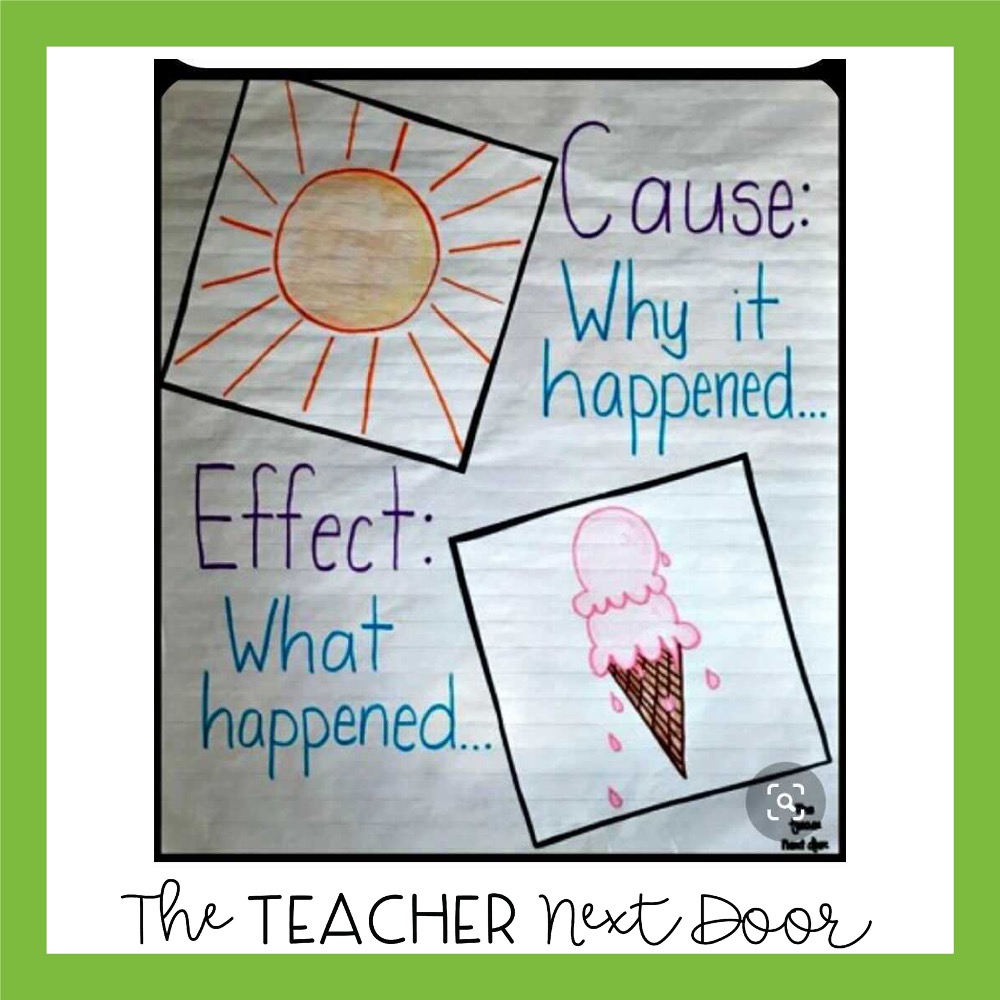
Use Mentor Texts
Mentor texts are important because they help the students see an example of what is being taught. Teaching cause and effect with mentor texts allows students to be actively engaged in read alouds or independent reading.
Take the book you are reading as a read-aloud and turn it into a lesson using the graphic organizer that students can fill in.
Students can even use these graphic organizers in small groups, partners, or independently. I like to use two different colored sticky notes or highlighters to represent cause and effect, stick them in their books, highlight their passage, and write them in the organizer.
There are so many fun and exciting ways to teach cause and effect, and I hope this list has been helpful and inspiring to you.
First, make sure your students truly understand the terminology.
Second, allow students opportunities to practice cause and effect by giving them real-life examples to which they can relate.
Third, provide digital and hands-on activities for your students to practice their cause and effect skills.
Fourth, get your students involved in games that are both fun and educational.
Lastly, give students something to refer back to, such as anchor charts or mentor texts, so that they can translate that to their independent work.
Interested in a few more teaching ideas? Check out these posts:
Important Steps to Teach Paired Passages
Using Think Alouds to Increase Comprehension in Upper Elementary
The Main Idea Strategy That Will Help Students Win Big



